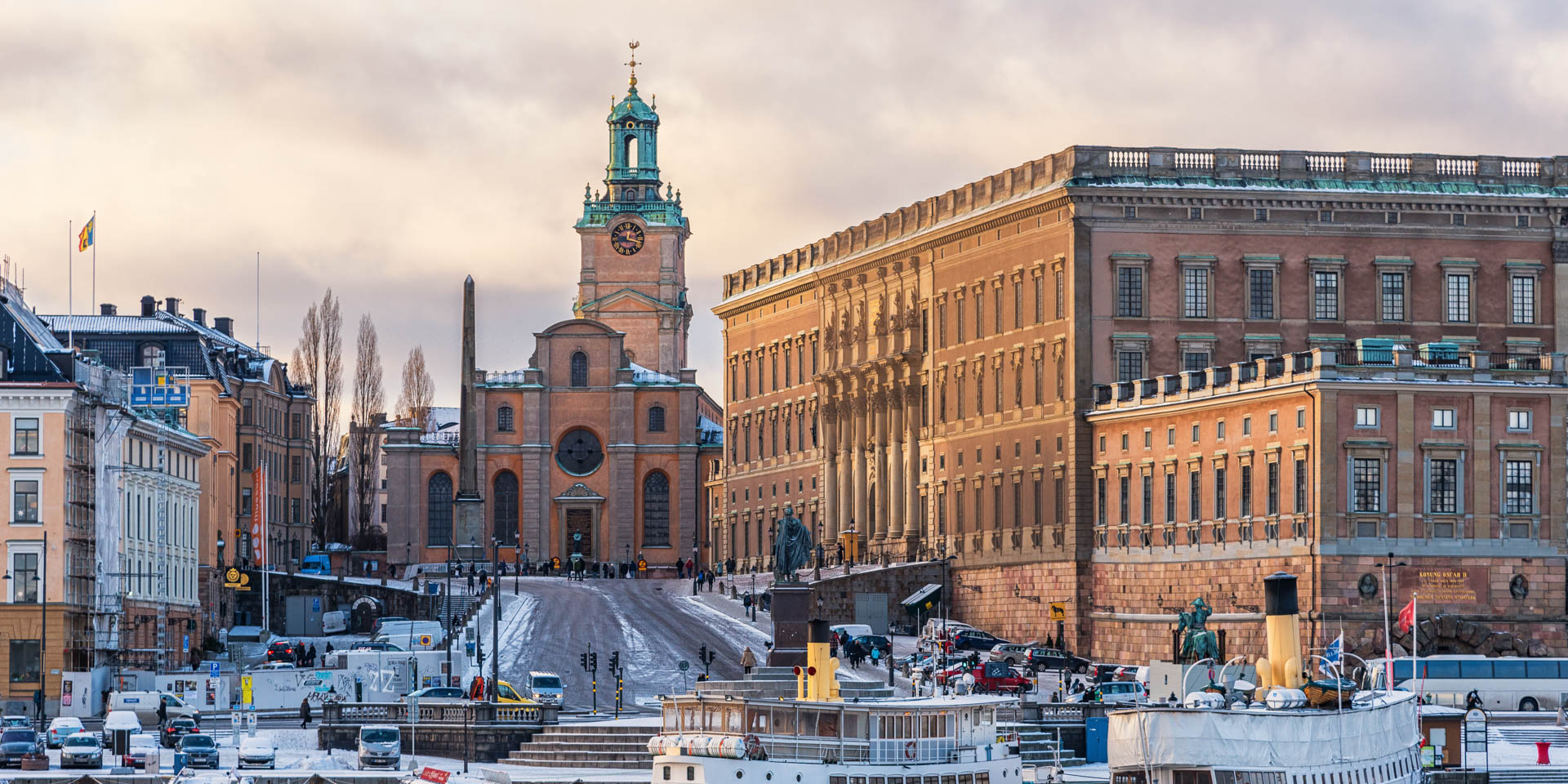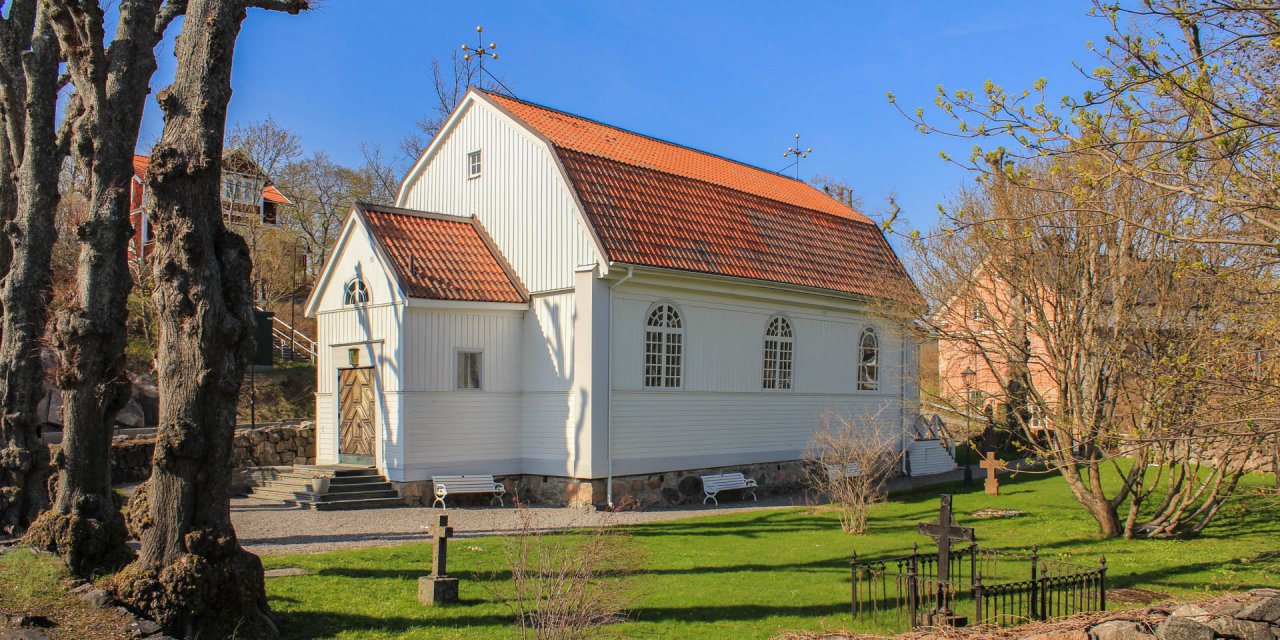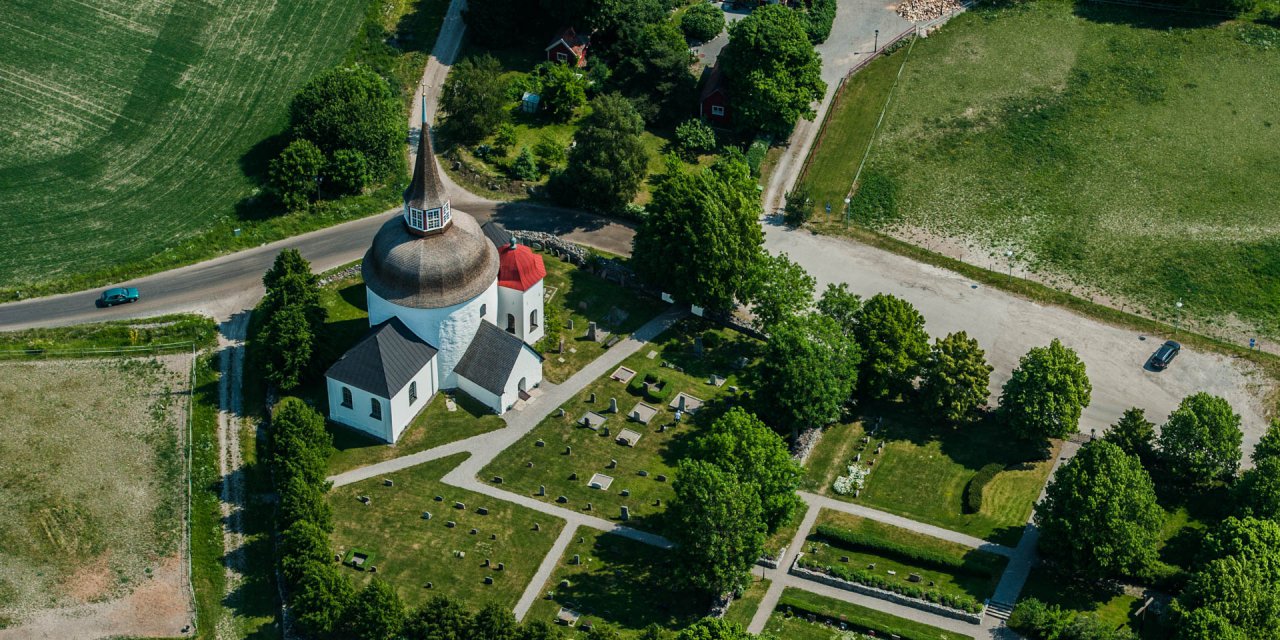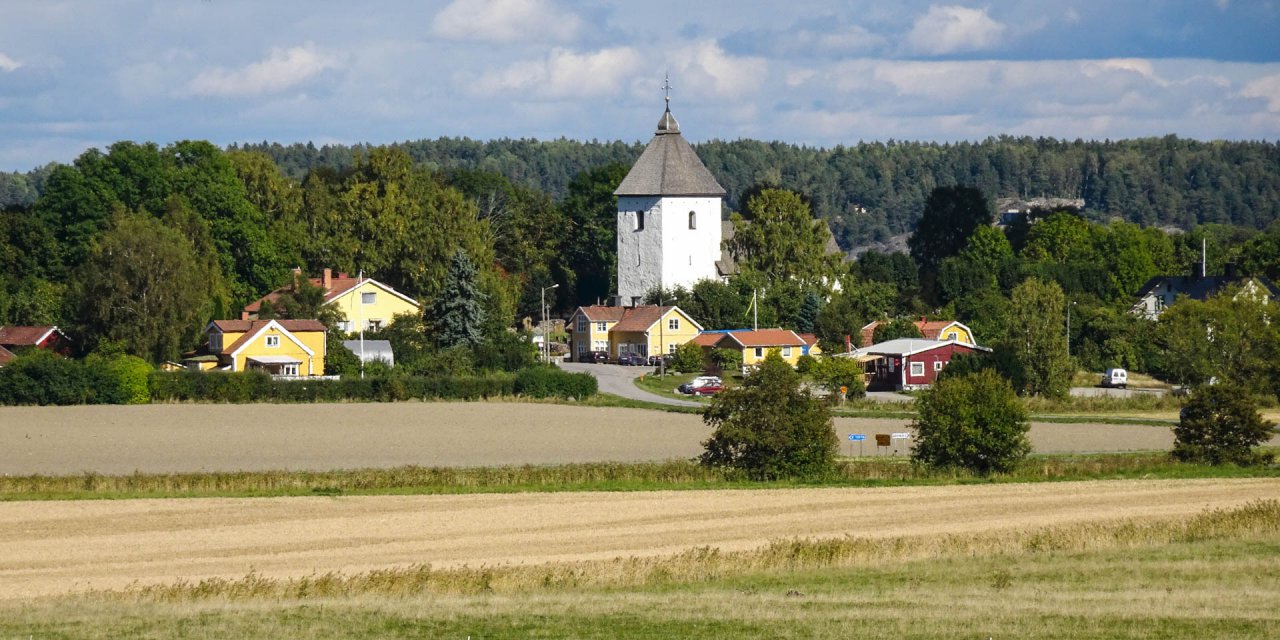

Storkyrkan
Stockholm Cathedral
The Saint Nikolai Kyrka (English: Church of St. Nicholas) is known as the cathedral of Stockholm and is primarily called
According to the tradition, the Storkyrkan was donated by the imperial administrator Birger Jarl, the founder of the city Stockholm and was built in 1264 on the highest point of the island Stadsholmen. The oldest documentary mention of the church can be found in the testament of the knight Johan Karlsson from 1279. Today only parts of the foundations and the remains of one wall are preserved from the original Storkyrkan.
In its youth, the Storkyrkan was frequently rebuilt and extended bit by bit. It has had its present shape and size since 1480, when it was extended to a five-aisled hall church in the Nordic brick Gothic style. The Storkyrkan received its current baroque appearance in the middle of the 17th century in order to harmonize stylistically with the recently built castle. The brick walls were plastered and in particular the east gable and the tower were redesigned according to the Baroque aesthetics.
The inside of the Storkyrkan
In 1908, time was reversed a little inside the large cathedral church, and the plaster on the mighty columns carrying the magnificent vaults was removed to give the church back its medieval character.
The most spectacular work of art within the Storkyrkan is undoubtedly the sculpture group of Saint George and the Dragon created in 1489 by the artist Bernt Notke from Lübeck. It is carved from oak wood, elaborately painted and partly gilded. The large sculpture group shows Saint George as a knight in a golden armour on horseback killing a dragon and saving the Virgin.
The group was commissioned by the imperial administrator Sten Sture and is to commemorate the battle on Brunkeberg, a hill in today's district Norrmalm. It was the decisive battle in the Danish-Swedish War, in which the attacking Danish troops were crushed by the Swedes on October 10, 1471 and Stockholm was saved from destruction. Saint George stands symbolically for Sten Sture, the defeated dragon for the Danish King Christian I and the Virgin symbolizes the saved city Stockholm.
Church art merges with city history
Another attention-getter that immediately catches your eye when you enter the cathedral is the so-called silver altar above the main altar in the nave. This is a large winged altar made of ebony, decorated with numerous silver applications and several elaborate silver reliefs.
Also in the central nave there are two magnificent royal chairs which were created in 1684 by the wood sculptor Burchart Precht and are used by members of the royal family on the occasion of official festivities. The same artist created the pulpit in the style of the French Baroque around 1700.
In the floor in front of the pulpit is the tomb of the important Swedish reformer, Olaus Petri (1493 – 1552), who translated the New Testament into Swedish for the first time. Petri was first a preacher and later a priest of the Storkyrkan, which, after becoming Protestant in 1527, was the first church in Sweden to hold services in the Swedish language.
The so-called Vädersolstavlan, a large painting from the time of the Reformator, hangs on the wall of the southern side aisle. It shows a spectacular parhelia phenomenon that was observed over Stockholm on April 20, 1535. However, it is only a copy from the year 1636, since the original of 1535 disappeared sometime in the darkness of history. The original was commissioned by Olaus Petri and shows not only a realistic representation of the Halo phenomena, but also the oldest pictorial representation of Stockholm, which makes this painting so important for the city history of Stockholm.
Storkyrkan: Opening hours & admission
Opening hours
Monday – Sunday: 10:00 – 18:00
Monday – Sunday: 9:00 – 18:00
Monday – Sunday: 10:00 – 18:00
Admission
Last update: 07/2022 | Errors and omissions excepted.



